Land Invertebrates
Media
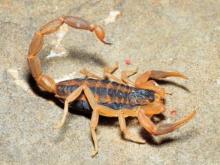
Species Types
Scientific Name
Centruroides vittatus
Description
Striped bark scorpions are pale yellowish brown, usually with two lengthwise dark stripes on the abdomen. It is the only species of scorpion in Missouri. It occurs in glades and other dry, warm, rocky areas, and sometimes in buildings and shelters and under piles of wood, brush, or garbage.
Media

Species Types
Scientific Name
Panorpa spp.
Description
Male scorpionflies will make you look twice, because the abdomen is tipped with what looks like a scorpion stinger! These nifty insects cannot sting, however.
Media

Species Types
Scientific Name
About 84 species in North America.
Description
Many blow flies are so shiny and colorful they’re called greenbottles and bluebottles. But pretty as they are, it’s hard not to be repulsed by their larval diets.
Media

Species Types
Scientific Name
About 30 species in North America north of Mexico
Description
Stilt-legged flies are a family of true flies. They are harmless, but most species resemble ichneumon wasps or ants. The middle and back pairs of legs are exceptionally long and thin, while the front pair of legs are much shorter.
Media

Species Types
Scientific Name
About 20 species in North America in subfamily Oecanthinae
Description
Tree crickets, or pale bush crickets, are a subfamily of crickets that are little seen but often heard. True to their name, instead of living on the ground, they live in trees, bushes, and tall herbaceous plants.
Media
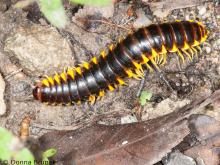
Species Types
Scientific Name
8 tribes, with about 23 genera, in North America north of Mexico
Description
Millipedes in family Xystodesmidae often have bright colors that serve as a warning to potential predators that they may secrete foul or toxic substances.
Media

Species Types
Scientific Name
Conocephalus strictus
Description
The straight-lanced meadow katydid is common in pastures, roadsides, and crop lands. The female's swordlike ovipositor is longer than the rest of her body. The male's song is a relatively soft buzz that sometimes breaks into a series of rapid, skipping tics.
Media

Species Types
Scientific Name
Amblycorypha oblongifolia
Description
The oblong-winged katydid is one of many species in the katydid family. Although it is usually green in most places, some populations made up of pink-form individuals.
Media

Species Types
Scientific Name
Microcentrum retinerve
Description
The lesser angle-winged katydid is one of our common species of so-called false katydids. Its song is a single 3-5-pulsed rattle, with about a second of silence between each rattle.
Media
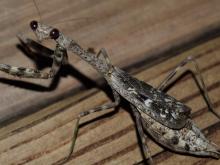
Species Types
Scientific Name
Stagomantis carolina, Mantis religiosa, and Tenodera sinensis
Description
Most people recognize mantids, or mantises, when they see them, but it takes more practice to distinguish among the different species of these efficient insect predators.
See Also
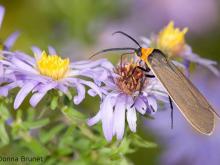
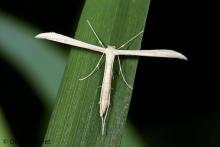

Media

Species Types
Scientific Name
Cisseps fulvicollis
Description
The yellow-collared scape moth is more often “orange-collared.” And whether you think it looks more like a firefly or a wasp, it’s still a moth!
Media

Species Types
Scientific Name
Nearly 150 species in North America north of Mexico
Description
Slim, delicate plume moths are instantly recognizable by their T-shaped silhouette, long legs, and muted shades of tan and brown. It can be hard to separate the various species.
Media

Species Types
Scientific Name
Pyrrharctia isabella
Description
Not many people know the adult Isabella tiger moth when they see one, but we’re all acquainted with its caterpillar, the woolly worm, or woolly bear.
About Land Invertebrates in Missouri
Invertebrates are animals without backbones, including earthworms, slugs, snails, and arthropods. Arthropods—invertebrates with “jointed legs” — are a group of invertebrates that includes crayfish, shrimp, millipedes, centipedes, mites, spiders, and insects. There may be as many as 10 million species of insects alive on earth today, and they probably constitute more than 90 percent all animal species.





















